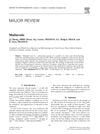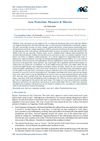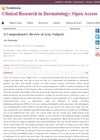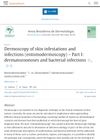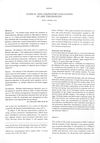Festschrift in Honor of the 65th Birthday of Dr. Howard I. Maibach
September 1995
in “
American Journal of Contact Dermatitis
”
seborrheic dermatitis topical corticosteroids Pityrosporum P. ovale Staphylococcus aureus nonimmunologic contact urticaria aspirin rubber latex polypeptides spina bifida cell cultures living skin equivalents skin irritancy testing UV light topical drug application subcutaneous tissue glyceryl monopentadecanoate androgenic alopecia yeast plastic wrap bacterial count skin pH nasal carriers mucosal cell defect nonimmune reactions antibodies therapeutic levels hair loss
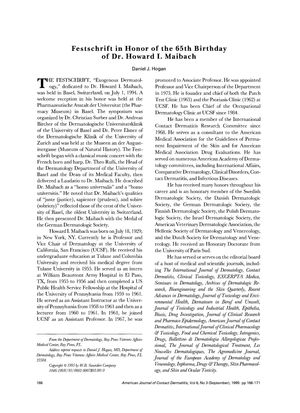
TLDR Antiyeast treatments work better for seborrheic dermatitis than steroids, and other findings include increased skin bacteria under plastic wrap, a nasal cell defect in Staphylococcus aureus carriers, quick resolution of certain skin reactions, high rubber latex allergy in spina bifida patients, and glyceryl monopentadecanoate's effectiveness for male hair loss.
During a session on skin conditions, it was discovered that antiyeast treatments are more effective for longer remissions in seborrheic dermatitis than topical corticosteroids, and that affected individuals have lower antibody levels to Pityrosporum. A study involving 29 patients with seborrheic dermatitis indicated negative prick tests to P. ovale, contrasting with less than half of atopic dermatitis patients showing positive tests. In microbiology, skin occlusion with plastic wrap for 5 days led to increased bacterial count and altered skin pH. Nasal carriers of Staphylococcus aureus were found to have a mucosal cell defect that promotes bacterial adhesion. In allergology, nonimmunologic contact urticaria was observed to resolve in less than 3 hours, and aspirin was noted to inhibit nonimmune reactions to certain acids. A high frequency of antibodies to rubber latex polypeptides was found in patients with spina bifida. Pharmacological research indicated that cell cultures and living skin equivalents are useful for skin irritancy testing, with the latter showing higher tolerance to chemicals and UV light. Topical drug application was found to achieve therapeutic levels in subcutaneous tissue. Notably, glyceryl monopentadecanoate improved androgenic alopecia in 76% of men in a study, a significant improvement over the 32% in the control group.
